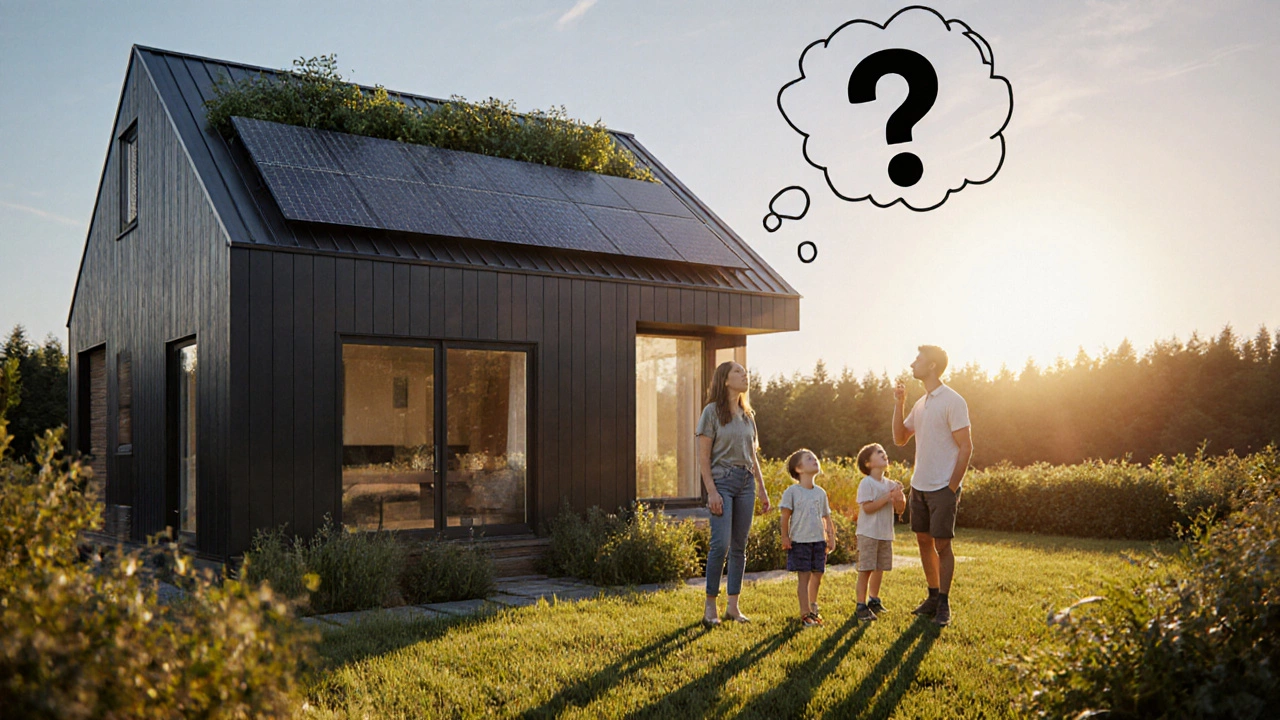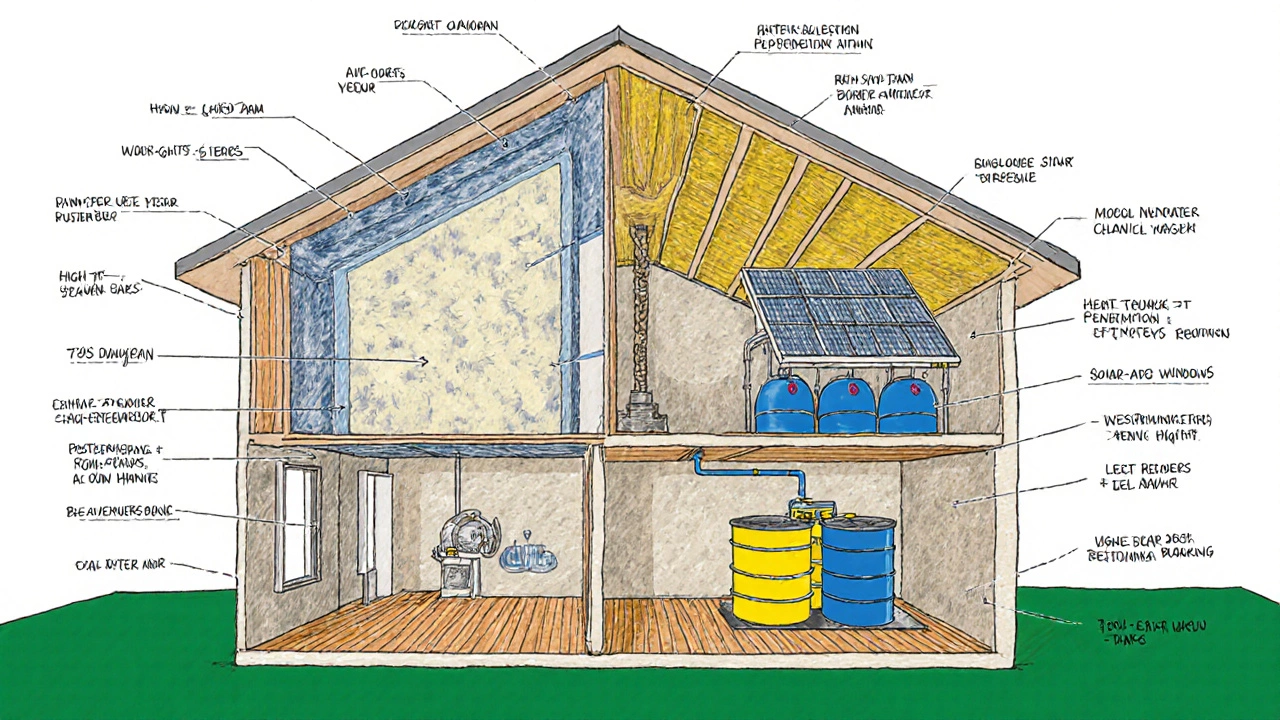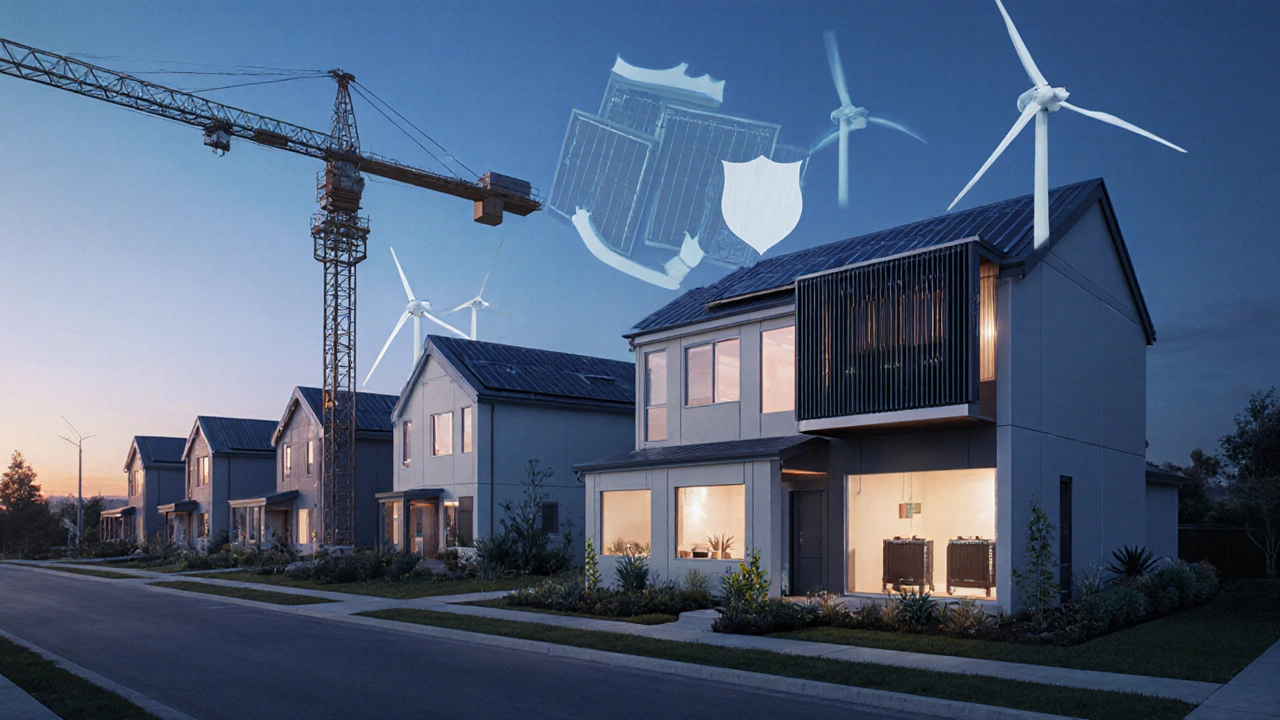Eco-Friendly House Costs: How Expensive Are Green Homes?
 Oct, 19 2025
Oct, 19 2025
Green Home Cost Calculator
Calculate Your Green Home Investment
Find out how much more you'll pay for an eco-friendly home and how quickly you'll see savings.
Your Green Home Investment Analysis
Estimated premium cost:
$
Compared to standard construction
Annual energy savings:
$0
Over a conventional home
Payback period
Your investment will pay for itself in approximately 0 years
Based on energy savings (may vary by location)
When you hear the phrase eco-friendly house cost, a mix of curiosity and skepticism shows up. Are you dreaming of a solar‑powered cottage but wonder if the price tag will break the bank? This guide breaks down the numbers, shows where the money goes, and gives real‑world examples so you can decide whether a green home fits your budget.
What Exactly Is an Eco‑Friendly House?
Eco-friendly house is a residential building designed to minimize environmental impact through energy efficiency, sustainable materials, and low‑carbon operations. In plain English, it’s a home that uses less energy, produces fewer emissions, and often generates its own power. Think of it as a regular house with a green twist-insulation that keeps heat in, windows that let daylight in without overheating, and a roof that might double as a solar array.
Why Do Green Homes Typically Carry a Higher Price Tag?
Two main forces push the price up:
- Up‑front material and technology costs - high‑performance windows, certified timber, and renewable energy systems cost more per unit than standard options.
- Specialized design and certification - architects who know Passive house standards or LEED certification spend extra hours on modeling and documentation.
But those higher upfront numbers often turn into savings over the life of the home. Let’s see where the money goes.
Breakdown of Typical Cost Drivers
- Site preparation and orientation: A sunny southern exposure reduces heating load but may require grading or retaining walls.
- Envelope performance: Triple‑pane windows, airtight drywall, and high‑R‑value insulation (think Energy‑efficient insulation like cellulose or spray foam) are the biggest line items.
- Renewable energy systems: Solar panel arrays, battery storage, and sometimes Geothermal heating add $10,000‑$30,000.
- Water‑saving fixtures: Low‑flow toilets, rainwater harvesting, and grey‑water recycling keep water bills low but increase construction costs.
- Materials with low embodied carbon: Bamboo flooring, recycled steel framing, or reclaimed wood can be pricier than conventional lumber.
- Design and certification fees: Hiring a consultant for LEED certification or a Passive house energy model adds $3,000‑$7,000.
Cost Comparison: Conventional vs. Eco‑Friendly Homes
| Home Type | Typical Range (per sq‑ft) | Key Cost Drivers |
|---|---|---|
| Conventional single‑family | $150 - $200 | Standard lumber, single‑pane windows, basic HVAC |
| Passive house | $200 - $260 | Triple‑pane windows, airtight envelope, heat‑recovery ventilator |
| Straw bale house | $180 - $230 | Straw bale walls, lime plaster, increased labor |
| Earthship | $250 - $300 | Ram‑earth tires, solar/wind power, water catchment |
| Net‑zero home | $240 - $310 | Solar PV, battery storage, high‑performance envelope |
Numbers vary by region and labor market, but the table shows a clear pattern: green homes cost roughly 20‑50% more to build. The good news? Energy bills can drop 50‑90%, and many owners recoup the premium in 7‑12 years.
Real‑World Case Studies
Case 1 - A 1,800 sq‑ft Passive House in Colorado
- Construction cost: $360,000 (≈ $200/sq‑ft)
- Solar + battery: $25,000
- Annual energy bill: $300 (vs. $1,800 for a typical home)
- Payback period: ~10 years
Case 2 - A 1,200 sq‑ft Straw Bale Cottage in Oregon
- Construction cost: $265,000 (≈ $220/sq‑ft)
- Energy‑efficient insulation (cellulose) and airtight drywall: included
- Annual heating cost: $150 (vs. $900 for a conventional build)
- Payback period: ~9 years
Both projects highlight that the extra spend isn’t a sunk cost; it’s an investment in lower utilities and higher resale value.

How to Keep the Budget in Check
- Prioritize high‑impact upgrades: Start with insulation and windows - they give the biggest energy drop for the smallest spend.
- Phase renewable systems: Install a basic solar array now, add battery storage later as finances allow.
- Use local, reclaimed materials: Reclaimed wood, salvaged brick, or locally sourced bamboo often costs less than imported green products.
- Seek incentives: Federal tax credit (26% for residential solar through 2032), state rebates, and utility green‑loan programs can shave $5,000‑$20,000 off the bill.
- Work with an experienced green builder: They know cost‑saving tricks like prefabricated wall panels that meet Passive House standards without custom labor.
Bottom line: a disciplined approach can shrink the premium to under 15% of the total build cost.
Financing Green Homes
Traditional mortgages work, but several green‑focused loan products exist:
- Energy‑Efficient Mortgage (EEM): Lenders give up to 10% higher loan limits for homes with certified energy performance.
- Green Home Equity Line of Credit (HELOC): Use the equity you build from savings on utility bills to fund additional upgrades.
- Community Solar Subscriptions: If rooftop PV isn’t feasible, you can buy into a local solar farm and still claim the tax credit.
Check with your bank for EEM eligibility; you’ll need proof of certification like a LEED or Passive House compliance report.
Future Outlook: Will Eco‑Friendly Housing Become Cheaper?
Three trends suggest costs will drop:
- Mass production of prefab green modules - factories are churning out airtight wall panels at scale, shaving labor costs.
- Battery price decline - lithium‑ion storage fell 70% in the last decade and is projected to keep sliding.
- Policy pressure - Many states now require new homes to meet a minimum energy‑performance rating, compelling builders to adopt greener methods across the board.
In 2025, the average premium for a net‑zero home is about 30% above conventional. By 2030, experts forecast a 10‑15% premium, making truly sustainable houses far more attainable.
Quick Takeaways
- Eco‑friendly houses typically cost 20‑50% more to build.
- Energy‑efficient envelope and renewable systems are the biggest cost drivers.
- Annual utility savings can offset the premium in 7‑12 years.
- Incentives, phased upgrades, and local reclaimed materials keep budgets lean.
- Financing options like EEM and green HELOCs make green homes more affordable.

How much more does a Passive House cost than a standard home?
On average, a Passive House adds $50‑$60 per square foot, which translates to a 25‑30% premium over a conventional build. The exact amount varies by region and labor rates.
Are there government incentives for installing solar panels on a new eco‑friendly house?
Yes. The federal Residential Clean Energy Credit offers a 26% tax credit for solar PV systems installed through 2032. Many states add rebates ranging from $500 to $5,000, and utilities often provide net‑metering credits.
Can I use reclaimed wood in a certified green home?
Absolutely. Reclaimed timber counts as a low‑embodied‑carbon material and is accepted by most green‑building rating systems, provided it meets structural and fire‑safety standards.
What’s the typical payback period for a home solar + battery system?
In sunny regions, a 6‑kW PV system with a 10‑kWh battery usually pays for itself in 7‑9 years. In cooler climates, payback can stretch to 12‑15 years, but tax credits shorten the net cost.
Is a Net‑Zero home more expensive than a Passive House?
Typically, yes. A Net‑Zero home must generate as much energy as it uses, so you add rooftop solar and possibly battery storage, raising the cost by another $10,000‑$30,000 beyond a Passive House’s envelope upgrades.